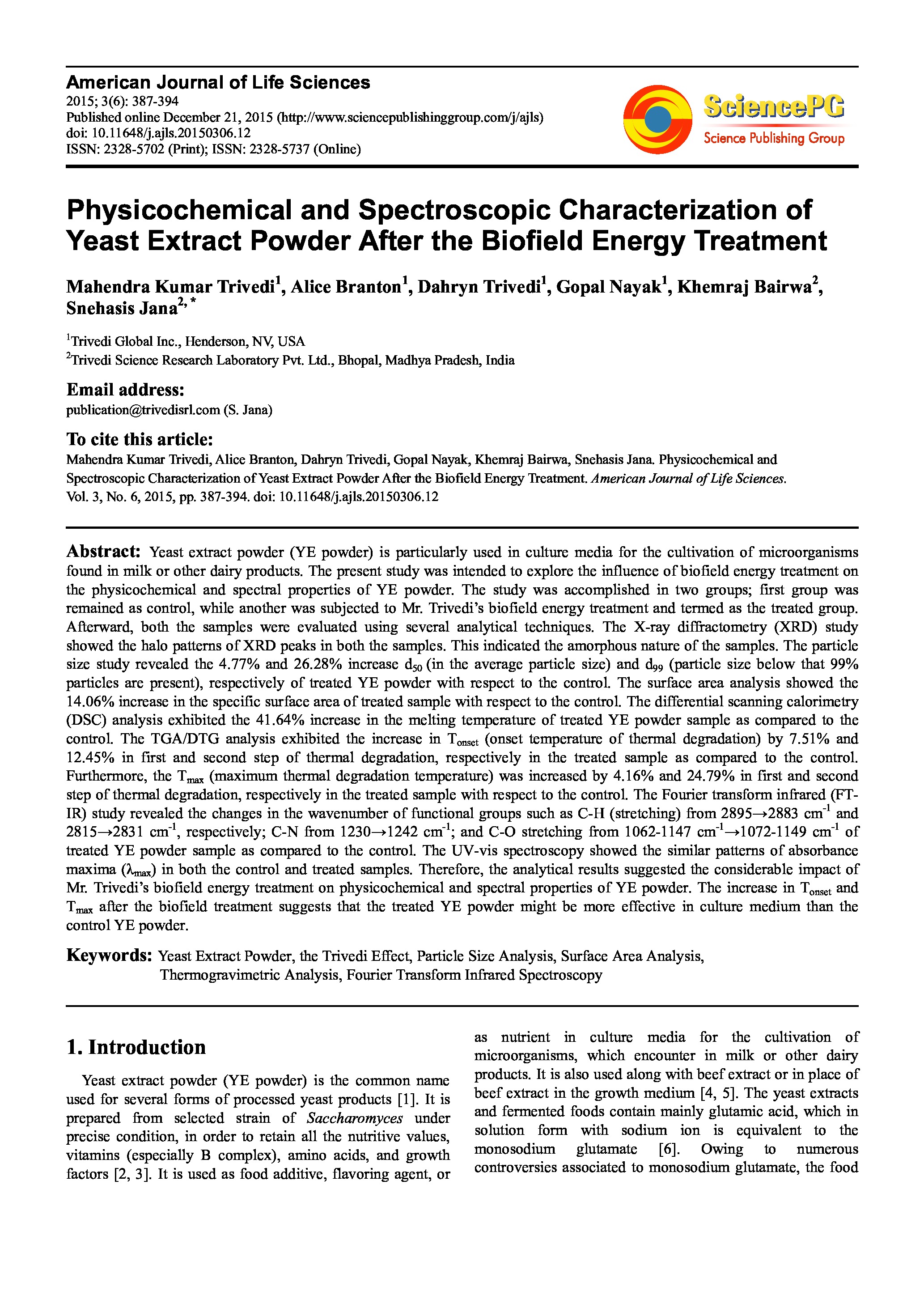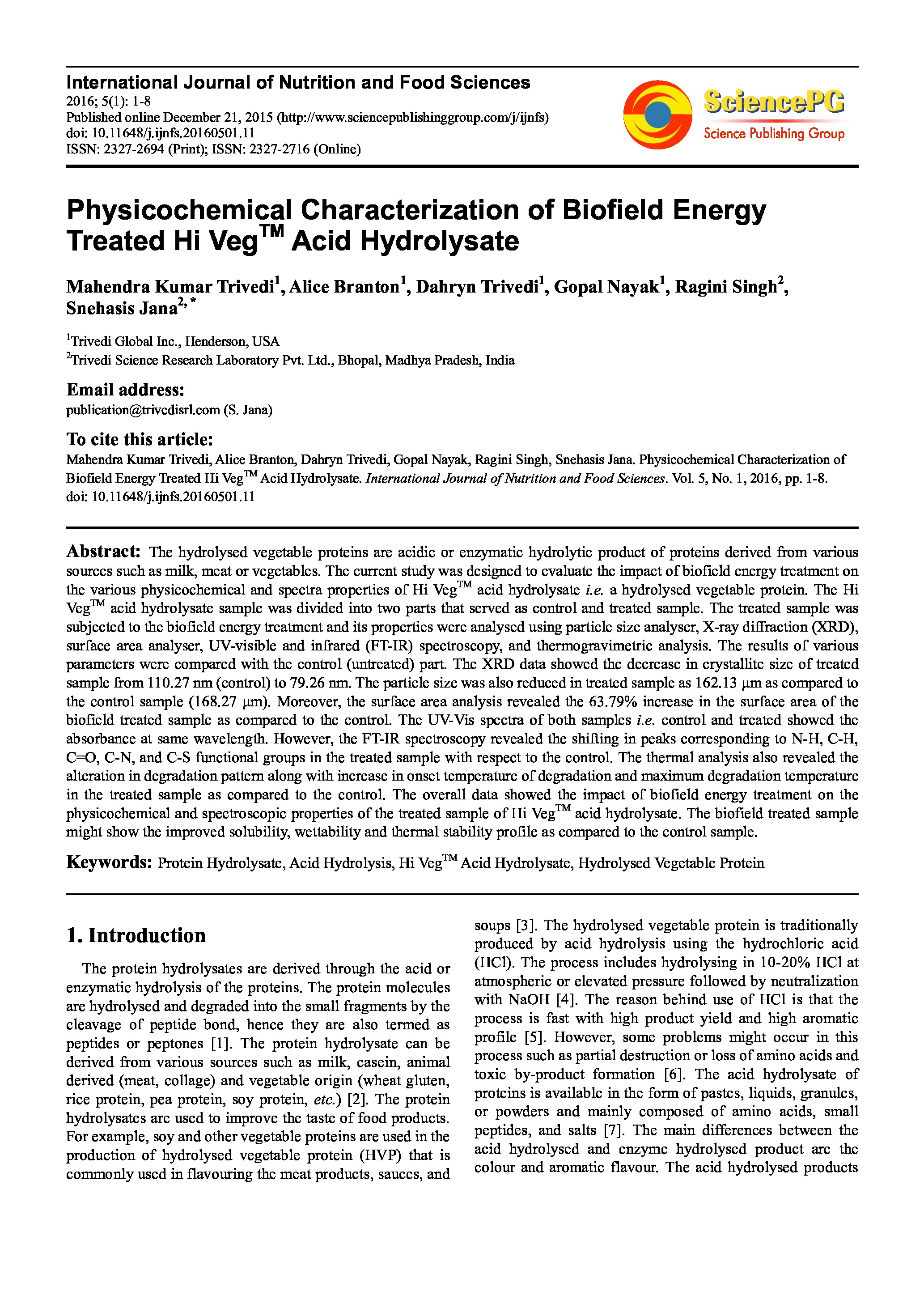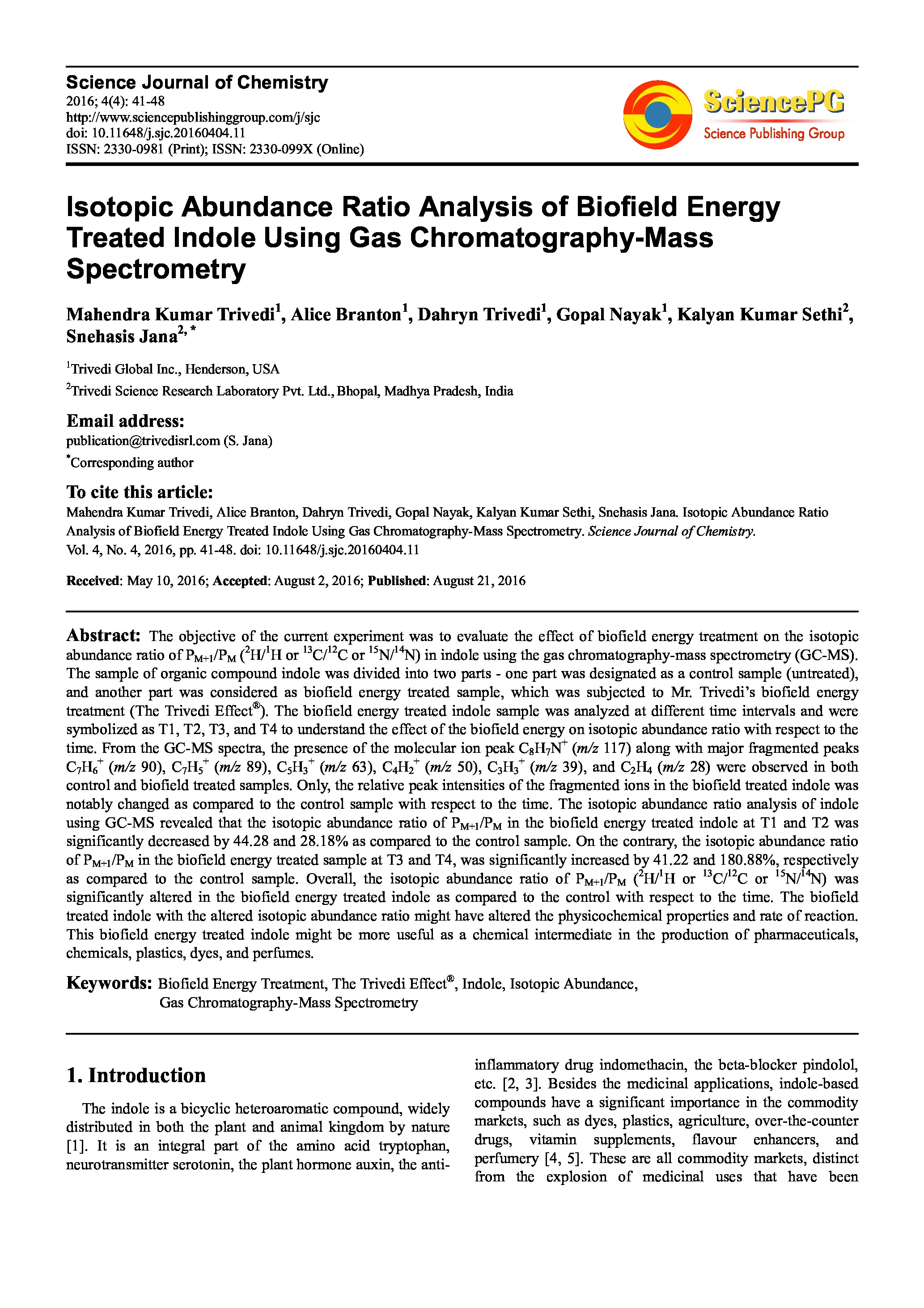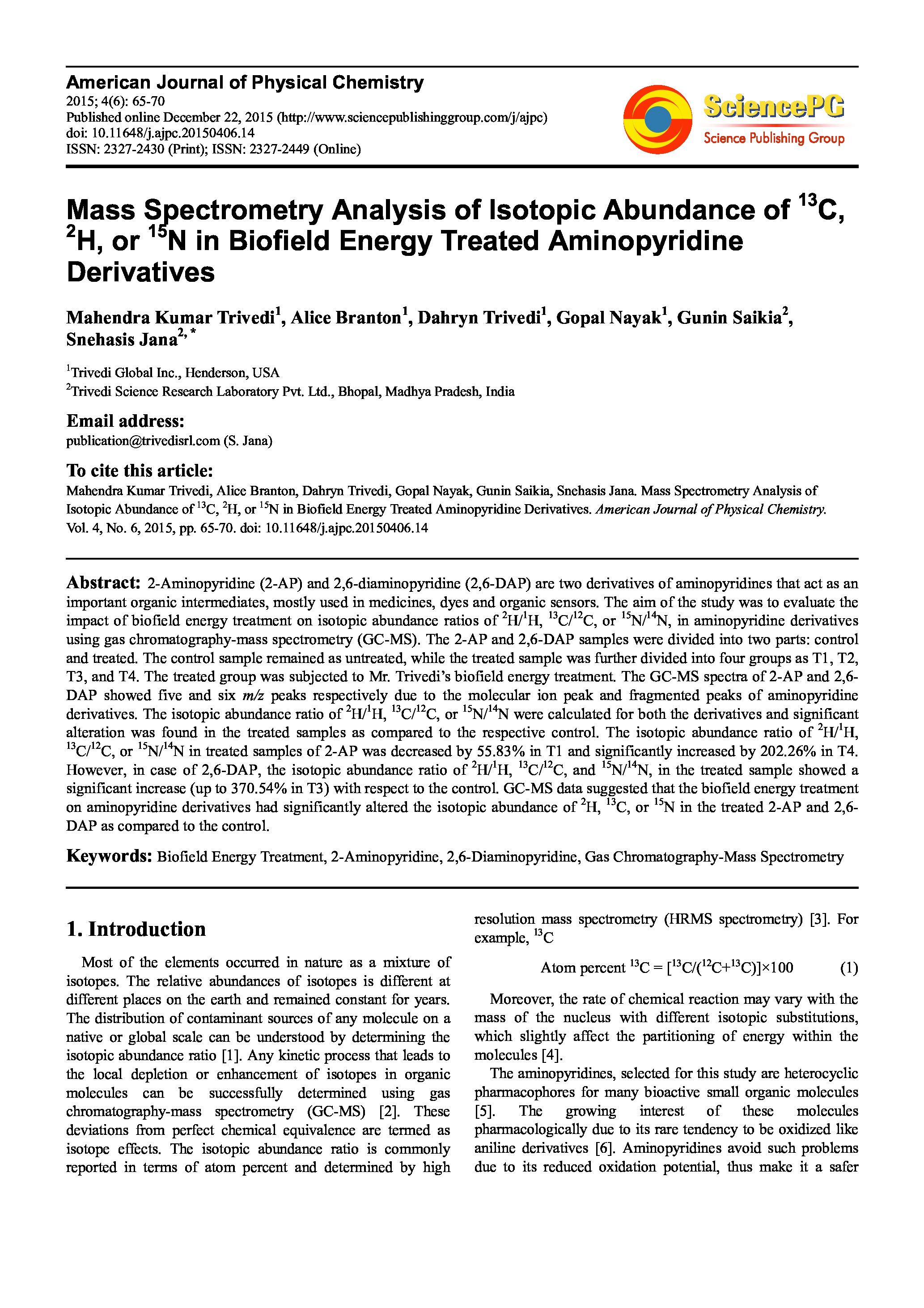Date of upload:
03.09.2016
Co-author:
Alice Branton, Dahryn Trivedi, Gopal Nayak, Gunin Saikia, Snehasis Jana
Abstract:
2-Aminopyridine (2-AP) and 2,6-diaminopyridine (2,6-DAP) are two derivatives of aminopyridines that act as an important organic intermediates, mostly used in medicines, dyes and organic sensors. The aim of the study was to evaluate the impact of biofield energy treatment on isotopic abundance ratios of 2H/1H, 13C/12C, or 15N/14N, in aminopyridine derivatives using gas chromatography-mass spectrometry (GC-MS). The 2-AP and 2,6-DAP samples were divided into two parts: control and treated. The control sample remained as untreated, while the treated sample was further divided into four groups as T1, T2, T3, and T4. The treated group was subjected to Mr. Trivedi’s biofield energy treatment. The GC-MS spectra of 2-AP and 2,6-DAP showed five and six m/z peaks respectively due to the molecular ion peak and fragmented peaks of aminopyridine derivatives. The isotopic abundance ratio of 2H/1H, 13C/12C, or 15N/14N were calculated for both the derivatives and significant alteration was found in the treated samples as compared to the respective control. The isotopic abundance ratio of 2H/1H, 13C/12C, or 15N/14N in treated samples of 2-AP was decreased by 55.83% in T1 and significantly increased by 202.26% in T4. However, in case of 2,6-DAP, the isotopic abundance ratio of 2H/1H, 13C/12C, and 15N/14N, in the treated sample showed a significant increase (up to 370.54% in T3) with respect to the control. GC-MS data suggested that the biofield energy treatment on aminopyridine derivatives had significantly altered the isotopic abundance of 2H, 13C, or 15N in the treated 2-AP and 2,6-DAP as compared to the control.




